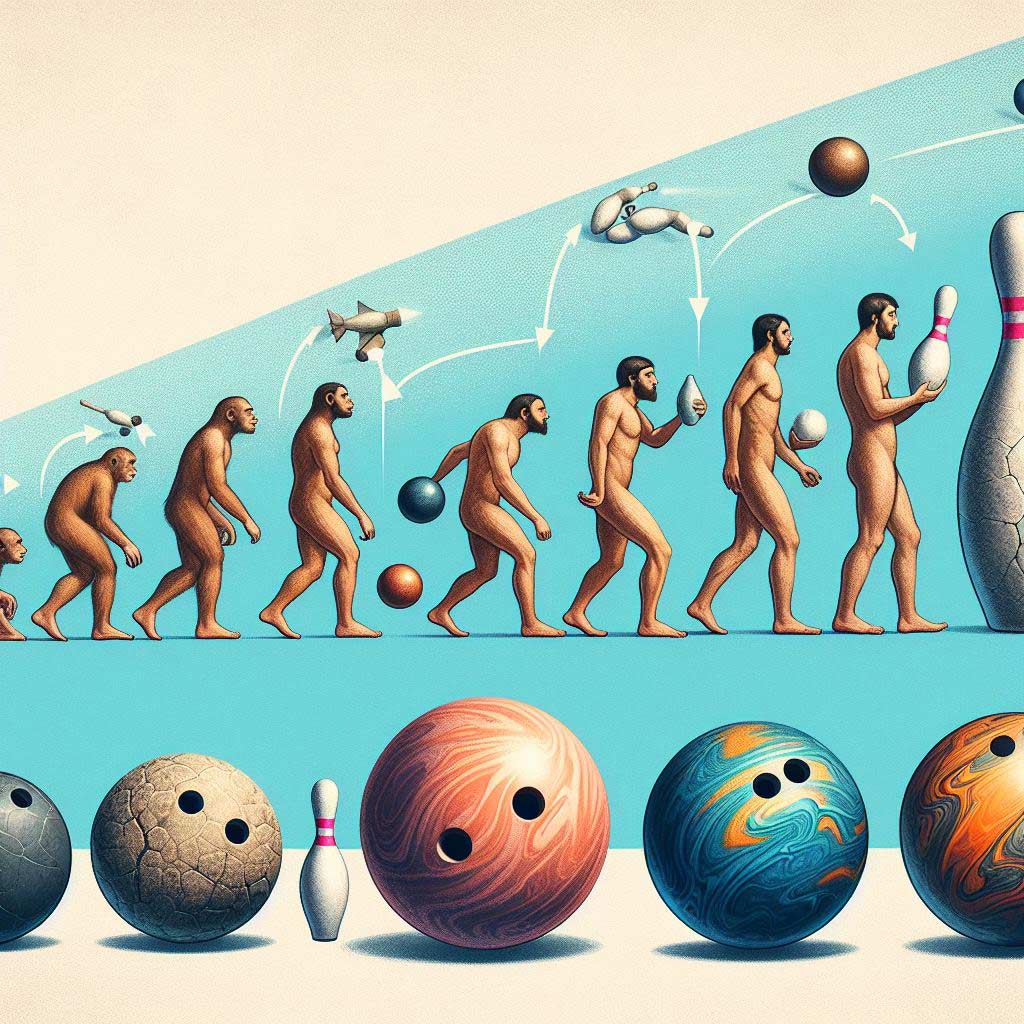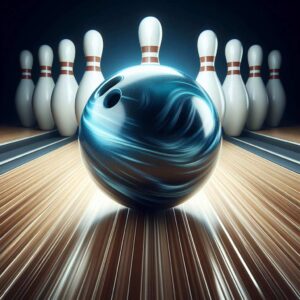Bowling is one of the most popular sports in the world, played by over 90 million people across ages and skill levels today. But just how old is the sport of bowling? When did humans start rolling balls at pins for recreation?
In this article, we’ll take you through a thoroughly researched history of bowling and pinpoint its origins along the way.
You’ll learn how rudimentary forms of bowling date back over 5,000 years! We’ll explore how early skittles games evolved into ninepin bowling by the Middle Ages, before the modern sport was birthed in America with the innovation of the 10-pin setup.
We’ll look at bowling’s golden age of swelling participation and celebrity fascination between 1900-1960. You’ll also discover how iconic bowling alleys became fixtures providing family-friendly competition, camaraderie, and wholesome Saturday night social outlets during the 20th century.
Join us on this journey across centuries and civilizations as we uncover the comprehensive backdrop to answer: how old is bowling?
Origins in Ancient Times
Bowling’s lengthy history stretches incredibly far back to the earliest civilizations on record. Based on archeological evidence, it is clear some variation of rolling balls towards targets for sport existed since 3200 BC!
That’s over 5,200 years ago, making bowling one of humanity’s oldest and most enduring pastimes.
Researchers have unearthed proof of basic bowling-style games being played in Ancient Egypt, Rome, and during the Early Modern Period across European nations.
Ancient Egypt – Primitive Bowling Emerges (3200 BC)
Bowling historians have confirmed the earliest known reference is from Ancient Egypt about 5,200 years ago. Archeological digs in a child’s grave dating back to 3200 BC uncovered crude stone objects resembling bowling balls, as well as skittle-like equipment. This reveals that an early form of bowling was in fact played this incredibly long ago!
Across Germany and the Netherlands – Skittles Games Gain Steam
While sparse details exist from Ancient Rome and other early civilizations, bowling resurfaces more clearly in written records from Germany and the Low Countries during the Middle Ages. References to bowling-esque games emerge across the 12th to 15th centuries in these regions.
At this stage, the sport bore greater resemblance to “skittles” or “kegel” games. This involved rolling or tossing a ball to knock down clubs, pins or informal targets – antecedents to modern bowling pins. Still, this marked a sizeable evolution further establishing bowling as an organized recreational activity.
By the 1500s and 1600s, regular references appeared to kegel and skittle style bowling games in England, Scotland and across Northern Europe.
Shakespeare and More Reference Bowling Games
Interestingly, bowling has quite the literary record too! Written texts from Shakespeare, German novelist Martin Luther, British politician Sir Francis Bacon and more make quite a few bowling references during the 15th and 16th centuries.
For example, Shakespeare’s symbolic “bowling alley” metaphor for the arrow’s aimless journey in Henry IV. Martin Luther would also make complaints against gambling on bowling and playing during church sermons.
Clearly by this period, early bowling iterations birthed perhaps a millennia and a half prior became fixtures across European recreational culture.
Ninepin Bowling Comes to America & Birth of 10 Pin Now centered in Northern Europe, different loose forms of bowling continued gaining traction as a popular game through the 17th century. Eventually it rode the wave of European migration to the freshly colonized United States as well.
The Early American Ninepin Era (Pre-1840s)
As Dutch and Northern English settlers populated Northeast US states like Connecticut and New York, they brought their penchant for ninepin bowling with them. This game utilized a hardwood ball with nine bowling pins typically strung together with string.
Early American Colonists and the Founders themselves actually made quite a few written references to their enjoyment of traditional ninepin bowling. So much for the claim bowling isn’t classy!
The Ban on Ninepin Leads to the 10 Pin (1840s) However, controversy struck when overambitious bowlers got caught up in betting schemes around their ninepin games. By the 1840s, too many incidences of gambling problems prompted several states to place bans on the traditional format.
In comes Connecticut bowling legend John Straub with a creative solution though. He simply added a 10th pin to bypass the law’s mention of a 9-pin setup! And thus the modern regulation setup for bowling was born thanks to this clever workaround.
Over the next decades, other states gradually dropped their restrictions on bowling as it adopted the new standard of 10 pins. And from 1890 onward, machines emerged to assist setting pins and retrieve balls mechanically – beginning the journey towards automated technology. This ramped up accessibility ultimately helping bowling cement mainstream appeal.
The Golden Age – Bowling Leagues & Competition Soars Post 1900-1960 Era
By the early 20th century, the core elements fell firmly in place for bowling’s tremendous rise into its golden era of obsession in America.
With the standardized format and rules, guidelines for competitive play, sanctioned tournaments, youth programs and more bowling was ready for its star turn.
The USBC Establishes Order and Legitimacy (1901)
A huge milestone came in 1901 with the incorporation of the United States Bowling Congress (USBC) as the national governing body to oversee leagues, tournaments and more. This body drafted formal playing rules, set equipment regulations, defined scoring methodology, and began legitimizing competitive tournaments.
Legion Headliner Events Raise Bowling’s Profile
As popularity grew, bowling events expanded beyond regional meets at enthusiasts’ local halls into more prestigious tournaments.
Major sites like Madison Square Garden, Chicago Stadium and others hosted early showcases covered prominently by the press. Top players competed in marquee events like the Bowling Proprietors’ Association of America’s annual championship for titles and prizes.
Superstars like titan Billy Welu, Buzz Fazio, Dick Hoover emerged earning acclaim and Hollywood-level fame rarely associated with bowlers today!
Machines & Celebrity Cred Raise Mass Appeal (Post 1930s Era)
While competitive bowling surged, another phenomenon paralleling it further embedded bowling into Americana – the proliferation of automated pinsetters and ball returns!
Prior, intensive manual effort resetting pins made bowling recreationally cumbersome. But bar owners in particular saw potential in automating. Heavy investment in machines by proprietors made bowling into an accessible weekend diversion versus complicated sport.
Plus the game benefitted from trickle down popularity as iconic actors like Frank Sinatra, Dean Martin, Jerry Lewis and more were captured on camera casually bowling in the Hollywood limelight!
Suburbs Flock to the Social Bowling Movement (1940-1960s)
By the 1950s, the American suburban expansion combined with a thriving automated bowling industry spawned the golden age’s crescendo – the post-war rise of ubiquitous bowling alleys offering family fun and late night hangouts!
Whether after a movie, or just longing for something to do on a Saturday night – suburbanites found it at brightly-lit AMF or Brunswick bowling palaces providing wholesome competition and camaraderie.
League play surged as both serious bowlers and casual weekend warriors packed houses. Even Presidents like Nixon were captured bowling for recreation and photo ops!
At bowling’s popular peak it’s estimated over 60 million Americans flooded nearly 12,000 bowling centers across the country by 1960.
The Modern Bowling Era Deepens Tradition from the 60s Onward
Even as urban flight, television and cultural shifts eroded bowling’s participant base, it still retains a uniquely beloved place mixing nostalgia and relevance.
Where communities lost population or centers decayed, many tenaciously preserved their bowling infrastructure. While league play waned, bowlers young and old continue chasing strikes and spares.
And whether in remodeled relics of tradition like Milwaukee’s Holler House dripping with retro charm, or modern entertainment mega venues like Vegas’ 72 lane bowling club, the bowling center endures as an iconic American institution.
Competing with shifting attention spans, bowling leans into modern flourishes like flashy digital scoring systems, ultra modern decor, glow lights and more to broaden its generational appeal.
Yet it retains the essence of community, friendly competition and innocent Saturday night fun hearkening back over a century.
Today 32 million Americans from school children to seniors take to the lanes annually in over 4,500 centers nationwide. While adapting the delivery, bowling retains the ingredients blending family, friends and friendly rivalry generation over generation even today.
The International Bowling Stage Extends the Sport’s Staying Power
Beyond retaining its intrigue stateside, tenpin bowling steadily built international appeal as well over the past 70 years. Concentrated popularity across Europe, East Asia and Oceania now complements the American bowling base.
Whether in upscale Japanese bowling palaces, Australian indoor centers inspired by American design aesthetics, or decked out European megacomplexes – bowling wins fans abroad as well.
Today, over 90 million bowlers in over 90 countries now slide down lanes annually spanning leagues, entertainment bowls and proper tournaments – nearly double bowling’s heyday domestic figures from six decades prior!
Factor in television broadcast reach for tournaments of 34 million plus, and bowling continues demonstrating fantastic global staying power amongst recreational sports.
Conclusion
So how old is bowling? Well, rudimentary forms date back over 5,200 years to Ancient Egypt and early European skittles games.
However, regulation 10 pin bowling as played today has its direct roots in 1840s America when adapting from traditional ninepin setups.
After organizing play, swelling competitive events and enhancing mass appeal through technology and media celebrity – bowling officially kicked off its golden era around the early 1900s.
And today, after over 200 years of history, tweaks and global expansion – bowling remains an iconic and beloved sport for over 90 million enthusiasts worldwide.
Hopefully this comprehensive journey through bowling’s history was as much an enjoyable read as rolling for strikes itself!
Frequently Asked Questions
Is bowling an old sport?
Yes, bowling is considered one of the oldest sports in the world. Rudimentary forms of bowling have been traced back over 5,000 years to ancient Egypt and Europe. So bowling has been played in some form since around 3200 BC.
When was bowling invented and by whom?
Bowling was not invented by one single person or civilization. Basic forms of rolling balls at targets as recreation trace back thousands of years. Modern 10-pin bowling developed more recently out of 9-pin setups in 1840s America as people like John Straub adapted the format to get around legal bans.
Is there an age for bowling?
There is no official minimum age for bowling. Kids as young as 3 or 4 can enjoy bowling with bumpers in the gutters under parent supervision. Most bowling alleys allow all ages, however very late hours may have age limits for minors. Competitive youth leagues, tournaments and championships kick off as young as ages 5-6.
When did Egyptians invent bowling?
The Egyptians did not necessarily “invent” the structure of modern bowling. However, archeological evidence reveals Egyptians over 5,000 years ago did play primitive forms of bowling rolling stones at targets. This traces the recreational activity of bowling back incredibly far in human history.
What is the oldest sport?
Wrestling is considered the oldest sport on record, with cave drawings, artifacts and references dating back wrestling matches and competitions back over 15,000 years. After wrestling, other ancient sports include archery, boxing, and early forms of bowling.
How did bowling begin?
Bowling originated from ancient skittle and kegel games in Europe as early as the 12th Century where balls or sticks were rolled at wooden clubs or informal targets. This evolved over centuries as rules standardized, equipment advanced and machines automated pin resets to make organized bowling recreation more accessible.
How many pins are in bowling?
Modern regulation bowling consists of 10 pins. This became standard in the 1840s, when traditional European ninepin bowling was banned in Connecticut, USA. Adding a 10th pin created a creative workaround that stuck as the new standard.
What is bowling skills?
Key bowling skills involve the ability to consistently release the ball straight and with proper speed, spin and angle. This takes athletic coordination plus techniques like good footwork, effective arm swing, targeted aim, lane reading skills and adjustments based on conditions. Accuracy, control, timing and adaptation are crucial bowling abilities.
How long has bowling been a sport?
In formal competition format with standardized rules and tournaments, bowling has been considered an organized sport since the founding of the United States Bowling Congress in 1895 which established guidelines for competitive play. Before this, bowling was considered more of a game. Adding structure for competition legitimized it as a governed sport locally and then globally.





